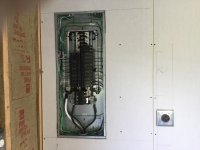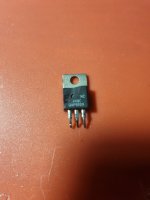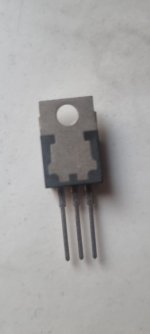The time spent assembling was negligible compared to designing, tweaking, adjusting, and verifying each functional block. It might sit for a week while I wrestle with the latest issue on paper before picking up a soldering iron again. I wanted all that wrung out completely before committing to a final design, since all the protection circuits that were being developed went into multiple amp designs. As soon as I get the shop and house built that “warehouse full of projects” is fixing to turn into several racks full of Iron Pigs. They don’t make them anymore, but I will. The core amplifier design was perfected back in 2012. That’s how far back that rabbit hole goes. When someone says he has to put a project on hold because of life, I completely understand and can easily relate.
It is part of the learning process. After some failures & bad experiences now i always try to be well prepared before doing anything. In this hobby so far my success rate is 100% 🙂
Oooh, flying pieces of epoxy. What fun! No pictures of the piece embedded in your forehead?
Yeah. The pin out is different.
Yeah. The pin out is different.
In this hobby it's very important to know about the components you playing with. Very important.
I can`t find the pieces anywhere, I always stand clear in case of... well today.
I had a very quick aftertought "is polarity the same?" while I was soldering it together, but I didn`t care to bother too much.
I had a very quick aftertought "is polarity the same?" while I was soldering it together, but I didn`t care to bother too much.
What’s hilarious about this, is that the polarity is the same. From left to right, highest potential, lowest potential, finally the one in between.
ICs are designed with the lowest potential (most negative) in the circuit connected to substrate, which soldered to the center pin of a TO-220 lead frame. Can’t really blame the designers…..
ICs are designed with the lowest potential (most negative) in the circuit connected to substrate, which soldered to the center pin of a TO-220 lead frame. Can’t really blame the designers…..
Last edited:
4440 board, 2 channel is like 200 Rupees here.($3)
6283 board, 40 Rupees. (50 cents)
TDA 2030 board, 70 Rupees. (90 cents).
TDA 2030, two channel, good caps, about Rupees 250, $3.
There are 2.1 drive boards as well, third chip amp for driving a sub-woofer.
If you think it is worth it, just buy the ready populated boards, some even have a heat sink, saves a lot of time sourcing parts and assembling board.
6283 board, 40 Rupees. (50 cents)
TDA 2030 board, 70 Rupees. (90 cents).
TDA 2030, two channel, good caps, about Rupees 250, $3.
There are 2.1 drive boards as well, third chip amp for driving a sub-woofer.
If you think it is worth it, just buy the ready populated boards, some even have a heat sink, saves a lot of time sourcing parts and assembling board.
View attachment 1377691
Offered here for 70 cents...plus shipping. Fake / equivalent chip is normal.
Random Indian seller net image, no ties.
Offered here for 70 cents...plus shipping. Fake / equivalent chip is normal.
Random Indian seller net image, no ties.
True true, thats what I missed.What’s hilarious about this, is that the polarity is the same. From left to right, highest potential, lowest potential, finally the one in between.
ICs are designed with the lowest potential (most negative) in the circuit connected to substrate, which soldered to the center pin of a TO-220 lead frame. Can’t really blame the designers…..
That would be more economic, but I like to do my circuits and learn in the progress. Also 1/2 of my project is custom, cannot be ordered on premade pcbs.4440 board, 2 channel is like 200 Rupees here.($3)
6283 board, 40 Rupees. (50 cents)
TDA 2030 board, 70 Rupees. (90 cents).
TDA 2030, two channel, good caps, about Rupees 250, $3.
There are 2.1 drive boards as well, third chip amp for driving a sub-woofer.
If you think it is worth it, just buy the ready populated boards, some even have a heat sink, saves a lot of time sourcing parts and assembling board.
I have a big problem with sourcing to220 insulators, is there any household item I can use? I have thermal paste -non conductive.
Oven bags: they are made from PETP or polyamide and withstand high temperatures. Like all polymers, the thermal conductivity is poor, but since they are thin, they have tolerable performances.is there any household item I can use?
For maximum safety, use two layers because the thickness is smaller than for standard mylar insulators
Ok, I remembered that I would also need bushings as I wouldn't trust plastic screws... For now I bought L and U aluminium profiles and will do heasinks seperately (for testing) and order correct insulators.
- Home
- Amplifiers
- Solid State
- Amplifier suggestion for old 3w speaker




